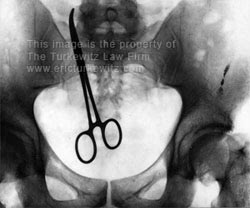
When I last touched the often imperceptible dividing line between medical malpractice and general negligence, it was because the difference in the statute of limitations was crucial to survival of the case. In that matter, there was trauma to the leg that resulted in death as the patent’s leg slammed into a bed rail. With a statute of limitations of three years for general negligence, but two and one-half years for malpractice, it’s easy to see how this can create litigation. (See: Medical Malpractice (So You Think You Know What It Is?)) A divided First Department decision ensued with Justice Catterson doing a lengthy analysis of the difference in Friedman v. New York Hospital-Cornell Medical Center.
The issue arose again last week, now in the Second Department, in Spiegel v. Goldfarb. This time the issue was the legal fee. You see, in New York, the legal fees are substantially lower in malpractice cases than in general liability, as a result of tort “reform” measures in the ’80s. These “reforms” resulted in de facto immunity for many medical professionals, and made it difficult for many victims to found counsel. In addition to a shorter limitations period, the legal fees were cut. Rather than a 1/3 fee, the malpractice legal fee (discussed further in one of my first posts on this blog) is:
30% of the first $250,000 of the sum recovered;
25% of the next $250,000 of the sum recovered;
20% of the next $500,000 of the sum recovered;
15% of the next $250,000 of the sum recovered;
10% of any amount over 1,250,000 of the sum recovered.
In Spiegel v. Goldfarb, the underlying case was a about a failure to diagnose endocarditis, an infection of the heart valves. One of those that settled was a lab. These are the magic words that make up the standard, but they don’t exactly give bright line definitions, which leads inevitably to litigation:
In distinguishing whether conduct may be deemed malpractice or negligence, the critical factor is the nature of the duty owed to the plaintiff that the defendant is alleged to have breached. A negligent act or omission by a health care provider that “constitutes medical treatment or bears a substantial relationship to the rendition of medical treatment by a licensed physician constitutes [medical] malpractice.” More specifically, an alleged negligent act constitutes medical malpractice when it can be characterized as a “crucial element of diagnosis and treatment” and “an integral part of the process of rendering medical treatment to [the plaintiff].”
The fault for this, of course, is not with the appellate division. Because the difference is often impossible to define. Rather, the solution is doing away with this artificial difference.
Malpractice cases are both more expensive and more difficult to handle. There is no compelling reason that the statute of limitations should be shorter or legal fees lower. If anything, the statute should be longer and the fees should be greater. And that is because many acts of malpractice are not even known at the time they occur (unlike an auto accident) and due to the complexity of the litigation.
There are some occasions, of course, when the reduced legal fee benefits the litigants. Those cases arise when they can actually find a lawyer to take the matter. (Though the 10% legal fee at the top end is often used by insurers in an attempt to drive a wedge between the plaintiffs and their counsel, by creating an incentive to take a smaller settlement because the risk-reward of going forward has become so unfavorable.) For many potential litigants, there is simply no lawyer to be found.
How do I know there is no lawyer to be found? Because I get these types of calls all the time. After I’ve declined the case because of the economics involved, many of these callers tell me that they’ve heard this before from several others that they’ve tried.
Frankly, it’s time New York stopped crapping on the victims of malpractice — and that is what those “reforms” are” — and restore fairness to the law.
It is not mere chance that the standard medical malpractice policy now is $1,300,000, just above the level at which the 10% fee kicks in. Going after a physician’s personal assets is a whole other thing, and not many plaintiff’s attorneys want to do it. It all fits together nicely – cases that may be “worth” (always a subjective thing, or a judgment, at some point) $1,500,000 will settle so much easier within the policy.